Ever since the driverless tractor emerged into the market, it has been changing the tractor industry with its fully autonomous tractor technology. From planting to harvesting, its range of benefits are providing cost-efficient solutions and improving productivity in numerous areas within the ag industry.
One piece of driverless technology that has recently made a tremendous impact on agricultural methods is the driverless tractor technologies. This auspicious advancement marks yet another milestone in agricultural modernization.
With increased production accuracy and safety for farmers, as well as multiple economic advantages, it’s no wonder why this powerful heavy machinery is quickly growing in popularity among growers around the world.
In this blog post, we’ll take a look at what makes driverless tractors so beneficial to large-scale operations and how they’re ushering in a new era of precision agriculture.
Take away key points:
- Driveless tractor technologies are autonomous agricultural machines that can operate independently from human control, bringing a range of benefits to farms and agricultural producers.
- Driverless tractor emerged in early 1948. but the autonomous technology was further perfected throughout various driverless tractors.
- Automated operations provided by self-driving tractors can increase efficiency, yield, and safety on farms.
- By taking advantage of precision farming techniques, self-driving tractors could greatly improve the quality and accuracy of farm management decisions.
- Self-driving tractors could be the key to improving the sustainability and productivity of modern agriculture.
- Small driverless tractor designed for basic farming tasks can mechanized agricultural tasks more efficiently!
Table of Contents
- What are driverless tractors: History of development
- The first-ever driverless tractor technologies
- Benefits of driverless tractors
- Challenges and limitations of driverless tractors
- The impact of driverless tractors on farming
- How do driverless tractors work?
- Advances in driverless tractor technology
- FAQs
- Are there driverless tractors?
- Does John Deere have a self-driving tractor?
- How much is a John Deere driverless tractor?
- What are driverless tractors used for?
- What are the disadvantages of driverless tractors?
- Who invented the driverless tractor?
- When was the self-driving tractor invented?
- How might a self-driving tractor impact agricultural production?
- Conclusion
What are driverless tractors: History of development
Driverless tractors, also called autonomous tractors, are self-driving vehicles with advanced sensors, GPS technology, and other wireless technologies that allow them to do different farming tasks without a human driver.
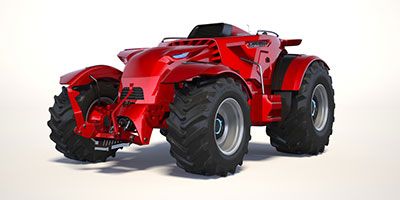
The first steps toward making tractors that don’t need a driver were taken in the 1990s, when companies began trying out automation technology in farming equipment. However, it wasn’t until the 2000s that the driverless tractor appears, advanced enough to create fully autonomous tractors.
1940: The driverless tractor was constructed by Frank W. Andrew by wrapping a cable that extended from the front steering arm of the tractor around a barrel or a wheel that was anchored in the field.
In the 1950s, a well-known tractor manufacturer Ford developed a driverless tractor called “The Sniffer” that could drive itself, but it was never put up for sale because it was difficult to operate it without running wire underground.
The TerraMax, made by the defense contractor Oshkosh Corporation in 2005, was one of the first. It could move through different terrains and even respond to traffic lights. John Deere, a leading tractor maker of farm equipment, also started to invest in driverless technology and autonomous equipment. In 2010, it made its first tractor that didn’t need a driver.
Since then, other companies like Case IH, New Holland Agriculture, and Kubota have made their own driverless tractors. These tractors use new advanced technologies like artificial intelligence and machine learning to make farming more precise and efficient. Even now, a small tractor without a driver made for hobby farmers can make a huge difference in how the farming season goes.
Previously, the driverless tractor used to follow a lead tractor between fields like a hired hand. However, now the driverless tractor technology has advanced towards independent functioning. This technology is being used to increase automation in farming. Other such autonomous technologies that are currently used in farming include automatic strawberry pickers and tractor designed for vegetable crops.
Until 1994, there were no significant improvements in the development of driverless tractors. However, that year, the engineers at Silsho Research Institute created the picture analysis system. The picture analysis system technology was used to guide a small tractor without a driver that was made for growing vegetables and roots.
Overall, the history of developing unmanned ground vehicles has been one of steady progress. More people are using them and the technology is getting better, both of which point to a bright future for driverless farming equipment.
The first-ever driverless tractor technologies
The Japanese company Yanmar, which makes diesel engines and farm equipment, made the first tractor that didn’t need a driver, with autonomous technology. The tractor, called the Yanmar Robot Tractor, was unveiled in 1988 and was a groundbreaking innovation in the agricultural industry and one of the best innovations for farm tractor or farm equipment.
The Yanmar Robot Tractor was a compact, self-driving farm vehicle that was equipped with a GPS system, advanced sensors, and a computerized control system. It was capable of plowing fields, vegetable and root crops and harvesting without the need for a human operator. With its sensors and computer system, the tractor could move over rough terrain and around obstacles.
While the technology was impressive at the time, the Yanmar Robot Tractor was not a commercial success due to its high cost and low reliability.
Benefits of driverless tractors
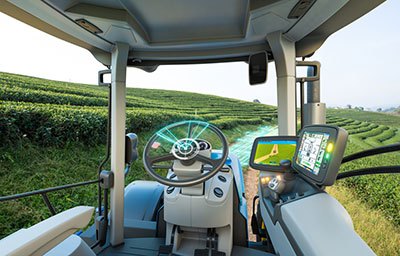
Various driverless tractors offer a wide range of benefits for farmers including:
Improved efficiency: With autonomous tractor, farmers can work around the clock and maximize their production output without needing to stop for breaks or rest, thus boosting their productivity and efficiency.
Cost savings: Automation eliminates the need for costly manual labor, reducing expenses for farmers, including wages and benefits, and helping to increase their profit margins.
Less soil compaction: Because unmanned vehicles are lighter than traditional tractors, they exert less pressure on the soil, minimizing soil compaction and preserving the quality of the soil, which leads to better crop yields over time.
Precision farming: When a tractor is equipped with advanced sensors and GPS technology, it can plant, harvest, and add fertilizer in a precise way. This helps increase crop yields and reduce waste. It can also be used for pulling farm machinery as well as other vehicles.
Improved safety: Unmanned ground vehicles offer a safer working environment for farm workers, eliminating the need for manual labor in hazardous conditions and reducing the risk of accidents and injuries.
Lower emissions: Unmanned vehicles operate on electric power or cleaner-burning fuels, resulting in lower emissions and a smaller carbon footprint.
Challenges and limitations of driverless tractors
– High cost: One of the biggest barriers to entry for an autonomous tractor is the high upfront cost of the technology. The initial investment required for the hardware, software, and infrastructure needed to support these vehicles can be prohibitive for many farmers, especially small-scale operations.
– Compatibility with older equipment: Many farmers have older, non-autonomous technology equipment that cannot be retrofitted with driverless technology. This can present a challenge for those who want to adopt self-driving tractors, as they may need to upgrade all their equipment to work with the new system.
– Limited decision-making skills: While driverless tractors are highly advanced, they are not yet capable of making complex decisions or responding to unpredictable situations. This means that they need to operate within highly structured, predictable environments to work effectively.
– Technical difficulties: Like any computer-controlled system, driverless tractors can experience technical difficulties, such as software glitches, sensor errors, or system failures. These issues can be difficult to diagnose and repair and can result in downtime for farmers.
– Limited flexibility: Autonomous technology tractors are designed to work within specific parameters, and their capabilities are limited to what they were programmed to do. This lack of flexibility can be a problem for farmers who need to adapt to changing weather conditions, soil types, or other unforeseen circumstances.
The impact of driverless tractors on farming
1. Increased efficiency
Driverless tractors have significantly improved efficiency in agricultural operations, allowing farmers to work around the clock and complete their work faster and with greater precision and it can be used for pulling farm machinery. This efficiency has contributed to increased productivity, reduced waste, and improved crop yields.
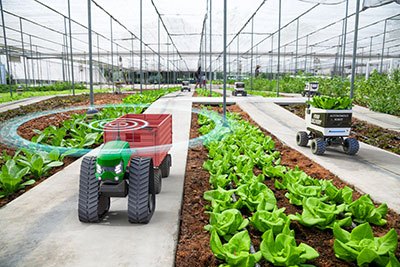
2. Precision agriculture
Autonomous tractor is equipped with advanced sensors, GPS tracking systems, and other technologies that can accurately monitor and precisely control planting, fertilization, and harvesting. This has led to the widespread adoption of precision agriculture, which optimizes crop yields, and vegetable and root crops while minimizing environmental impact.
3. Improved working conditions
Driverless tractors can operate in hazardous conditions, reducing manual labor and allowing workers to perform their jobs in a safer environment. This has led to fewer accidents and reduced work-related injuries.
4. Environmental benefits
Autonomous tractors run on cleaner-burning fuels, reduce emissions, and minimize soil compaction, all of which contribute to a more sustainable and environmentally-friendly agriculture industry.
5. Technological advancements
The development of driverless tractors has spurred other technological advancements in agriculture, such as increased use of automation, the development of precision irrigation systems, and advances in data analysis for improved decision-making.
How do driverless tractors work?
Fully autonomous tractors navigate and work by using advanced technologies, including GPS, sensors, and computer systems, to automate farming tasks.
Supervised autonomy tractors function with a supervised autonomy system. GPS technology allows the tractor to determine its precise location and the location of the field it is working on. Sensors can find obstacles and changes in the terrain, and cameras and LiDAR agricultural technology can make a high-resolution map of the tractor’s surroundings.
Precision agriculture focuses to increase profits while minimizing resource use with autonomous farming. GPS devices and computers help farmers optimize the use of tractors for better efficiency.
A computer system controls the tractor’s movement and farming implements, such as planting, fertilizing, and harvesting. This system processes data from the sensors and GPS to make adjustments to the tractor’s speed, steering, and direction.
Autonomous tractors also gather information about their surroundings, such as soil moisture, temperature, and crop health. This data can be used to optimize crop growth and yield, reduce waste, and improve soil management.
Advances in driverless tractor technology
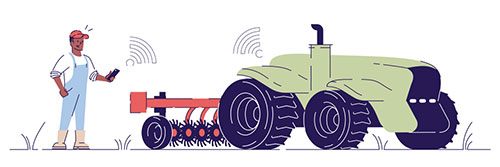
Current driverless tractor technologies is constantly evolving and advancing as manufacturers seek to develop more sophisticated and efficient systems to meet the needs of modern agriculture.
Here are some of the recent advances in current driverless tractor technologies:
Artificial intelligence (AI): Autonomous tractors are now equipped with AI capabilities that can help them make more intelligent decisions, predict crop yields, and identify potential problems before they occur. This leads to improved efficiency and productivity on the farm.
Cloud computing: The use of cloud computing allows for real-time data sharing and analysis, enabling farmers to access agricultural data such as weather conditions and soil moisture, and use that data to optimize crops.
Precision irrigation: Fully autonomous tractor can now be integrated with precision irrigation systems, allowing farmers to reduce water waste and target specific areas of the field that require more or less water.
Increased mobility: Autonomous tractors are no longer limited to traditional tractor designs and can now take on a variety of forms, including smaller, more agile vehicles that can access hard-to-reach areas.
Use of drones: Drones and driverless tractors are equipped with cameras and sensors can be used to collect data on crop health, identify disease, and monitor conditions in the field, providing farmers with valuable information for informed decision-making and independent functioning.
Machine learning: Driverless tractors are now able to learn from their experiences, allowing them to improve their accuracy and reduce errors over time. This full autonomous technology helps to optimize operations, resulting in increased efficiency and productivity.
FAQs
Are there driverless tractors?
Yes, there are driverless tractors currently available and in use. John Deere, Case IH, and New Holland Agriculture are just a few of the big companies that have made their own versions of self-driving farm tractors with GPS, sensors, and advanced computer systems.
Does John Deere have a self-driving tractor?
Yes, John Deere offers a range of self-driving farm tractors, including the Autonomous Tractor System (ATS). The ATS is a semi-autonomous tractor that can do some tasks without a human operator. It does this by using GPS navigation agricultural technology.
How much is a John Deere driverless tractor?
The cost of a John Deere driverless tractor depends on the model and its features. Generally speaking, the Autonomous Tractor System (ATS) starts at around $90,000. Higher-end models, such as the Autonomous Sprayer or Autonomous Harvester, can cost upwards of $250,000. Prices may also vary based on customization and installation costs.
What are driverless tractors used for?
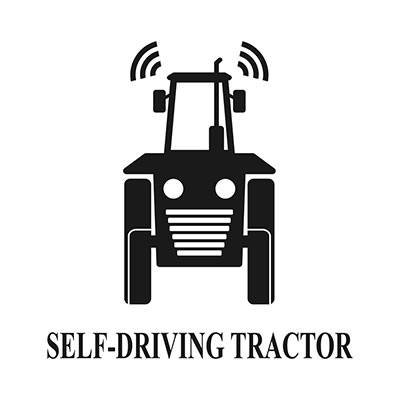
Driverless tractors are used for a variety of tasks, such as plowing, planting, harvesting and spraying. Driverless tractors can help farmers save money and work more efficiently by replacing manual work with robots and mechanize agricultural tasks quicker on the farm land.
Also, some driverless farm tractors are made to be able to see obstacles and change their course to avoid them. This ensures that the tractor is operated safely and accurately.
What are the disadvantages of driverless tractors?
Some things that could be bad about driverless farm tractors are their high cost, their limited ability to work with existing equipment, and possible data security issues. Also, driverless tractors still need to be closely watched and taken care of to make sure they work well. Also, some farmers may find it hard to learn how to use driverless tractor technologies because it is still a new full autonomous technology with a steep learning curve.
Who invented the driverless tractor?
Frank W. Andrew is credited with inventing the first successful driverless tractor in 1948. His invention, known as the ‘Andrew’s Auto-Steer‘, used a mechanical system of levers and gears to control the tractor without requiring human intervention. This design was revolutionary for its time and marked a major milestone in automated farming technology and it included a looped cabled through the front steering arm around the barrel or fixed wheel.
When was the self-driving tractor invented?
The first driverless tractor appears in 1948. Frank W. Andrew was the first to create a self-driving tractor. His invention, known as the ‘Andrew’s Auto-Steer‘, used a mechanical system of levers and gears to control the tractor without requiring human intervention in the barrel or fixed wheel area.
How might a self-driving tractor impact agricultural production?
A self-driving tractor can make a big difference in farming by making it much more efficient and productive as it can mechanize agricultural tasks.
By eliminating the need for a human driver, the tractor can work around the clock without interruption. Also, self-driving technology can help farmers use precision farming techniques like variable rate seeding and fertilizing to get the most out of their crops while using the least amount of resources on the farm land.
Conclusion
In conclusion, self-driving tractors could change the way farming is done by making it much more efficient, productive, and safe.
By eliminating the need for a human driver, automating operations, and taking advantage of precision farming techniques, autonomous machinery could become an invaluable tool in modern farming.
